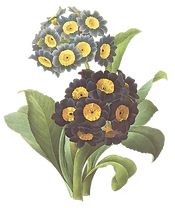La vie en 8 bits: les secrets et les astuces des consoles vintage
- alulatom1980
- Aug 18, 2023
- 2 min read
The best-selling console of this generation was the NES/Famicom from Nintendo, followed by the Sega Master System (the improved successor to the SG-1000), and the Atari 7800. Although the previous generation of consoles had also used 8-bit processors, it was at the end of the third generation that home consoles were first labeled and marketed by their "bits". This also came into fashion as fourth generation 16-bit systems like the Sega Genesis were marketed in order to differentiate between the generations. In Japan and North America, this generation was primarily dominated by the Famicom/NES, while the Master System dominated the Brazilian market, with the combined markets of Europe being more balanced in overall sales between the two main systems. The end of the third generation was marked by the emergence of 16-bit systems of the fourth generation and with the discontinuation of the Famicom on September 25, 2003. However in some cases, the third generation still lives on as dedicated console units still use hardware from the Famicom specification, such as the VT02/VT03 and OneBus hardware.
The third generation also saw the beginning of the children's educational console market.[citation needed] Due to their reduced capacities, these systems typically were not labeled by their "bits" and were not marketed in competition with traditional video game consoles.
La vie en 8 bits
The diet composition of the Grey Wagtail Motacilla cinerea of the Babor Range is followed by analysis of faecal samples (90 faeces) before and during the breeding season 2010. The Grey Wagtail's diet varies depending on the stage of the breeding cycle at the southern edge of their breeding area in North Africa (Bejaia). The diet consists predominantly of aquatic preys (51.79%), with Coleoptera being the most frequent constituent (n=331, 45.5%). During the pre-laying period (February-March), the diet was variable (91 prey-taxa and H'=3,36 bits) and preys of medium size (5 to 8mm) were most common. During the incubation period (April-May), preys were mainly aquatic (60%) and larger (20 to 32mm). At the end of the breeding season (June-July), there was a greater occurrence of terrestrial preys (31 aquatic versus 30 terrestrial taxa). 2ff7e9595c



Comments